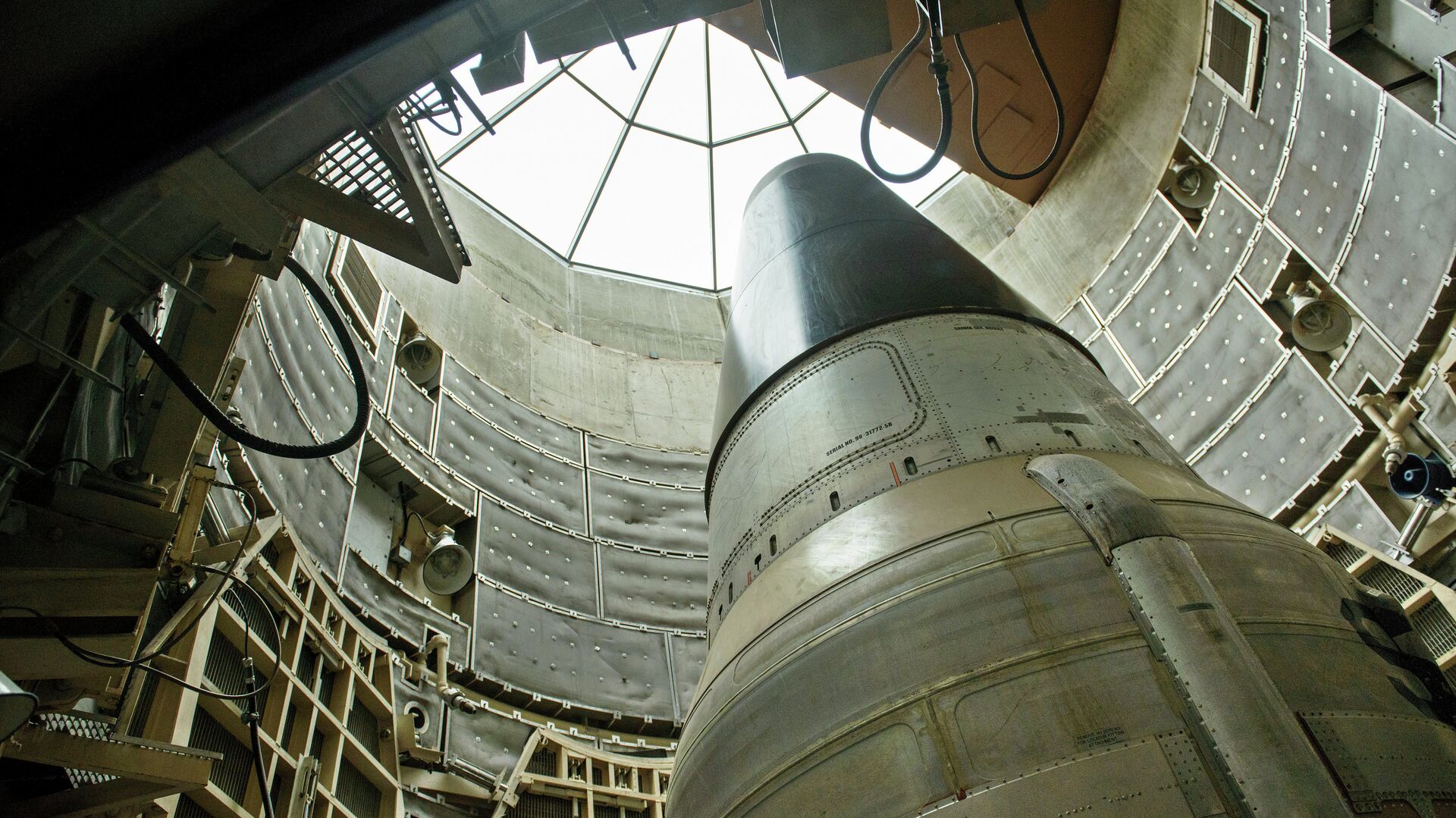https://sputnikglobe.com/20230221/whats-new-start-treaty-and-why-did-russia-suspend-it-1107667839.html
What's New START Treaty and Why Did Russia Suspend It?
What's New START Treaty and Why Did Russia Suspend It?
Sputnik International
Russian President Vladimir Putin announced on February 21 that Russia was suspending its participation in the New START Treaty. What is the New START Treaty and why did he suspend it?
2023-02-21T14:53+0000
2023-02-21T14:53+0000
2023-05-28T15:25+0000
sputnik explains
us
europe
opinion
russia
new start treaty
start treaty
start ii treaty
inf treaty
anti-ballistic missile (abm) treaty
https://cdn1.img.sputnikglobe.com/img/102321/81/1023218157_0:234:4500:2765_1920x0_80_0_0_c049b902403ece63129e2784cfb1859d.jpg
Addressing the Federal Assembly on February 21, President Vladimir Putin placed emphasis on NATO's intention to impose a strategic defeat on Russia amid its special military operation to demilitarize and de-Nazify Ukraine.The Russian president also mentioned growing calls from the transatlantic alliance to allow on-the-ground inspections of the nation's nuclear sites. According to the president, these demands sound absurd, especially given that NATO specialists modernized and armed drones to attack Russia's Engels Air Base, home to part of the airborne contingent of Russia's nuclear triad. "And now they want to inspect our defense facilities. In the current conditions and today's confrontation, this simply sounds like some kind of nonsense."From START I to New STARTThe Treaty between the United States of America and the Russian Federation on Measures for the Further Reduction and Limitation of Strategic Offensive Arms, also known as the New START Treaty, was signed by then-Russian President Dmitry Medvedev and his American counterpart Barack Obama in Prague on April 8, 2010.Initially, START I (Strategic Arms Reduction Treaty) was signed between the United States and the Soviet Union on July 31, 1991 and entered into force on December 5, 1994. The agreement barred its signatories from deploying more than 6,000 nuclear warheads and a total of 1,600 intercontinental ballistic missiles (ICBMs) and bombers.The next stage was START II, which complemented the previous agreement by attempting to establish further limits on strategic nuclear weapons for each party. It was inked on January 3, 1993 and envisaged a two-phase reduction process. By the end of Phase I, the US and Russia were to reduce their total deployed strategic nuclear warheads to 3,800-4,250; while by the end of Phase II, this figure was not to exceed 3,000-3,500.START II was ratified by the US Congress on September 26, 1996. The Russian State Duma followed suit on April 14, 2000, but made the law conditional on preserving the so-called ABM Treaty. However, US lawmakers refused to ratify the Extension Protocol and the 1997 ABM Demarcation Agreements.The 1972 Anti-Ballistic Missile Treaty (ABM) was an arms control treaty signed between the United States and the Soviet Union which limited Moscow and Washington’s ability to build ballistic missile interceptors, and was designed to slow the expansion of the superpowers’ arsenals of nuclear warheads and delivery systems, and to prevent either country from trying to gain an advantage over the other which would upset the global strategic balance.In response, on June 14, 2002, Russia announced its withdrawal from START II due to Bush's withdrawal from the ABM Treaty.START III, or New START, came as a result of long consultations between the Russian and US governments. In June 2006, Russian President Vladimir Putin came up with an initiative to start a new negotiation process on nuclear arms reduction. Experts started developing the document after the meeting of Presidents Dmitry Medvedev and Barack Obama in London on April 1, 2009 on the sidelines of the G20 summit. The negotiations ended 11 months later with the long-anticipated document being inked by the heads of the two major nuclear powers.The sides agreed that they would reduce their strategic nuclear stockpiles to 1,550 warheads each. Warheads on deployed ICBMs and deployed SLBMs count toward this limit and each deployed heavy bomber equipped for nuclear armaments counts as one warhead toward this limit. This limit was 74% lower than the limit of the 1991 START Treaty and 30% lower than the deployed strategic warhead limit of START II. Likewise, the participants of the accords agreed to set a combined limit of 800 deployed and non-deployed ICBM launchers, SLBM launchers, and heavy bombers equipped for nuclear armaments. They also set a separate limit of 700 deployed ICBMs, deployed SLBMs, and deployed heavy bombers equipped for nuclear armaments.The United States and the Russian Federation submitted the document for ratification in their respective parliaments in May 2010. The US Senate approved it on December 22, 2010; Russia's State Duma and the Federation Council did the same on January 25 and 26, 2011, respectively.The parties established the Bilateral Consultative Commission (BCC) to implement the provisions of the treaty. The group's meetings were convened on an irregular basis at the request of either party.In addition, New START gave both sides the right to conduct coordinated checks of the opposite side's strategic forces "on the ground," including ICBM bases, submarine bases and air bases. 18 annual inspections of two types were envisaged. Inspections of the "first type" were conducted at facilities hosting strategic offensive weapons bases of land-based ICBMs, ICBM-armed nuclear submarines, and strategic aviation air bases. Inspections of the "second type" were carried out at places where missiles were loaded, repaired, and stored. Under the agreement's protocol, each party could conduct up to 10 inspections of the first type and eight of the second. As of January 2021, the parties to the treaty had conducted 328 inspections and exchanged 21,403 notifications.Whom Exactly Does US Missile Defense Shield Target in Europe?Still, the parties made a number of reservations. The resolution of the US Congress mentioned that the new treaty does not impose restrictions on the deployment of missile defense systems, including in Europe. For its part, Russia reserved the right to withdraw from the treaty if the US missile defense reaches the stage of development when it becomes a threat to Russia's security. Separately, it was pointed out that the provisions of the preamble which link strategic offensive arms and missile defense have legal force and must be fully taken into account by the parties.It appeared at the time that Washington understood Russia's concerns with regard to the deployment of NATO missile defense systems on the nation's doorstep in Europe. Russia's military specialists have repeatedly referred to launching capabilities of the US air defense weapons. Similarly, Moscow asked its Western partners against whom they were deploying the ballistic missile defense site. In response, Washington cited "the potential Iranian nuclear threat," something which did not sound convincing to the Kremlin.In September 2009, the Obama administration announced that it would replace plans made under former President George W. Bush to build a radar site in the Czech Republic and launchers for long-range missile interceptors in Poland with a plan to deploy existing missile defense systems to Europe and the Eastern Mediterranean over the next two years. Nonetheless, in February 2010, the Obama Cabinet announced that Romania, which joined NATO in 2004, would host the first deployment of SM-3 land-based interceptors in 2015 and Poland would host the next site in 2018. The two sites, in Poland and Romania, were named as part of the European Phased Adaptive Approach (EPAA), where the US contributed, through NATO, to the development of the ballistic missile defense umbrella over Europe. Russia made it clear that the EPAA posed a threat to its missile forces and security. Even though various phases of the US project have been delayed several times, it is still up and running.Trump Killed INF & Uncertainty Over New STARTAnother unpleasant surprise came during the presidency of Donald Trump, who dubbed New START a "bad deal" in 2017 and announced in 2018 that the United States would withdraw from the 1987 Intermediate-Range Nuclear Forces (INF) Treaty.The United States groundlessly accused Russia of violation of the INF Treaty by testing and deploying a "banned" missile system, referring to the ground-launched cruise missile 9M729. Eventually, the treaty was torn apart at Washington's initiative on August 2, 2019.Russia and China lambasted the Trump administration for shattering global security. Since its inception, the INF Treaty led to the elimination of 2,692 US and Soviet nuclear and conventional ground-launched ballistic and cruise missiles with ranges between 500 and 5,500 kilometers, thus facilitating the attempt at the de-militarization of the major nuclear powers.New START was slated to expire on February 5, 2021. While the Russian leadership signaled its readiness to sign a new five-year extension, the Trump administration sought a new framework for the agreement and said that it would only renew the treaty if Russia made additional commitments. The US mainstream media noted at the time that the Trump administration believed that Russia was “desperate” to uphold New START and would make any concessions to keep it in place. However, Moscow did not allow Washington to twist its arm.Eventually, the extension of New START was discussed by Vladimir Putin and Trump's successor, Joe Biden, during a phone talk on January 26, 2021.Biden's Weaponization of KievHowever, over the course of 2021, the Biden administration stepped up support for the neo-Nazi regime in Kiev and increased the provision of weapons to Ukraine. During his address to the Federal Assembly, Putin underscored that Moscow was aware that the Kiev regime was planning a new wide-scale offensive against Donbass. The Ukrainian leadership even voiced the idea of dropping the nation's non-nuclear status.Furthermore, the US and NATO rejected crucial provisions of the Kremlin's December 2021 draft security agreements concerning guarantees of the transatlantic military bloc's eastward non-expansion and Ukraine's neutral status. Russia had little if any alternative but to launch a special military operation to secure the country's sovereignty and protect Russian-speakers in the breakaway republics of Donetsk and Lugansk.While the US and its NATO allies have openly declared their goal to weaken Russia and bleed it white, they also requested full access to the nation's nuclear sites. By demanding that Russia resume inspections of nuclear sites, NATO, in fact, declared its desire to become a party to the New START, Putin said. The Russian president noted that this provides the UK and France with a unique opportunity to open their nuclear stockpiles for inspection, too.Indeed, given that NATO is targeting Russia as a unified bloc, it would be fair if all three nuclear member states of the bloc participated in a future agreement, if one were to be inked some day.
https://sputnikglobe.com/20230221/putin-russia-showed-readiness-for-dialog-with-west-for-years-but-was-ignored-rebuffed-1107651097.html
https://sputnikglobe.com/20221213/21-years-ago-today-us-rips-up-abm-treaty-with-russia-starting-slow-slide-toward-current-crisis-1105420298.html
https://sputnikglobe.com/20230221/from-new-start-freeze-to-reasons-for-ukraine-op-key-takeaways-from-putins-federal-assembly-address-1107653700.html
https://sputnikglobe.com/20211101/putin-us-missile-deployment-in-europe-poses-threat-1090391201.html
https://sputnikglobe.com/20221015/us-designed-european-sky-shield-initiative-to-escalate-tension-with-russia-analyst-says-1101880792.html
https://sputnikglobe.com/20221105/kiev-never-concealed-it-could-make-nukes--west-is-abetting-it-journo-says-1103811709.html
russia
united kingdom (uk)
Sputnik International
feedback@sputniknews.com
+74956456601
MIA „Rossiya Segodnya“
2023
News
en_EN
Sputnik International
feedback@sputniknews.com
+74956456601
MIA „Rossiya Segodnya“
Sputnik International
feedback@sputniknews.com
+74956456601
MIA „Rossiya Segodnya“
what is new start, start-3 treaty, treaty between us and russia on measures for the further reduction and limitation of strategic offensive arms, treaty between the us and russia, new start treaty, new start, new start treaty nuclear threat initiative, nuclear threat initiative, negotiating the new start treaty, new start treaty extension, joe biden new start treaty, how abm agreement linked to start treaty, when trump torn apart inf treaty, why putin suspended new start
what is new start, start-3 treaty, treaty between us and russia on measures for the further reduction and limitation of strategic offensive arms, treaty between the us and russia, new start treaty, new start, new start treaty nuclear threat initiative, nuclear threat initiative, negotiating the new start treaty, new start treaty extension, joe biden new start treaty, how abm agreement linked to start treaty, when trump torn apart inf treaty, why putin suspended new start
Addressing the Federal Assembly on February 21, President
Vladimir Putin placed emphasis on NATO's intention to impose a strategic defeat on Russia amid its special military operation to demilitarize and de-Nazify Ukraine.
The Russian president also mentioned growing calls from the transatlantic alliance to allow on-the-ground inspections of the nation's nuclear sites. According to the president, these demands sound absurd, especially given that NATO specialists modernized and armed drones to attack Russia's Engels Air Base, home to part of the airborne contingent of Russia's nuclear triad. "And now they want to inspect our defense facilities. In the current conditions and today's confrontation, this simply sounds like some kind of nonsense."
"[The West] seeks to inflict a strategic defeat on us and to creep onto our nuclear sites. In connection with this, I am forced to announce today that Russia is suspending its participation in the New START Treaty. I repeat - not exiting from the treaty, but suspending its participation," Putin emphasized, adding that he had signed a decree to put new strategic ground-based complexes on combat duty.
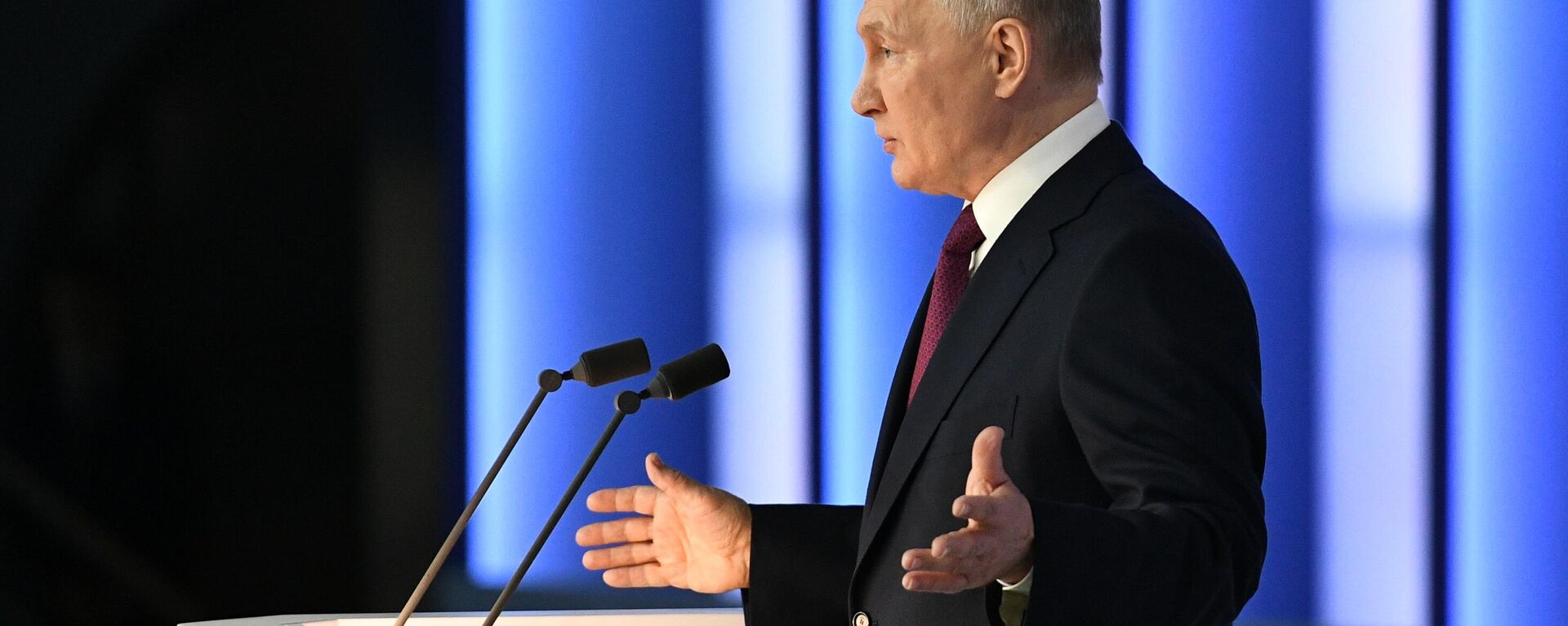
21 February 2023, 09:14 GMT
From START I to New START
The Treaty between the United States of America and the Russian Federation on Measures for the Further Reduction and Limitation of Strategic Offensive Arms, also known as the New START Treaty, was signed by then-Russian President Dmitry Medvedev and his American counterpart Barack Obama in Prague on April 8, 2010.
Initially, START I (Strategic Arms Reduction Treaty) was signed between the United States and the Soviet Union on July 31, 1991 and entered into force on December 5, 1994. The agreement barred its signatories from deploying more than 6,000 nuclear warheads and a total of 1,600 intercontinental ballistic missiles (ICBMs) and bombers.
The next stage was START II, which complemented the previous agreement by attempting to establish further limits on strategic nuclear weapons for each party. It was inked on January 3, 1993 and envisaged a two-phase reduction process. By the end of Phase I, the US and Russia were to reduce their total deployed strategic nuclear warheads to 3,800-4,250; while by the end of Phase II, this figure was not to exceed 3,000-3,500.
START II was ratified by the US Congress on September 26, 1996. The Russian State Duma followed suit on April 14, 2000, but made the law conditional on preserving the so-called ABM Treaty. However, US lawmakers refused to ratify the Extension Protocol and the 1997 ABM Demarcation Agreements.
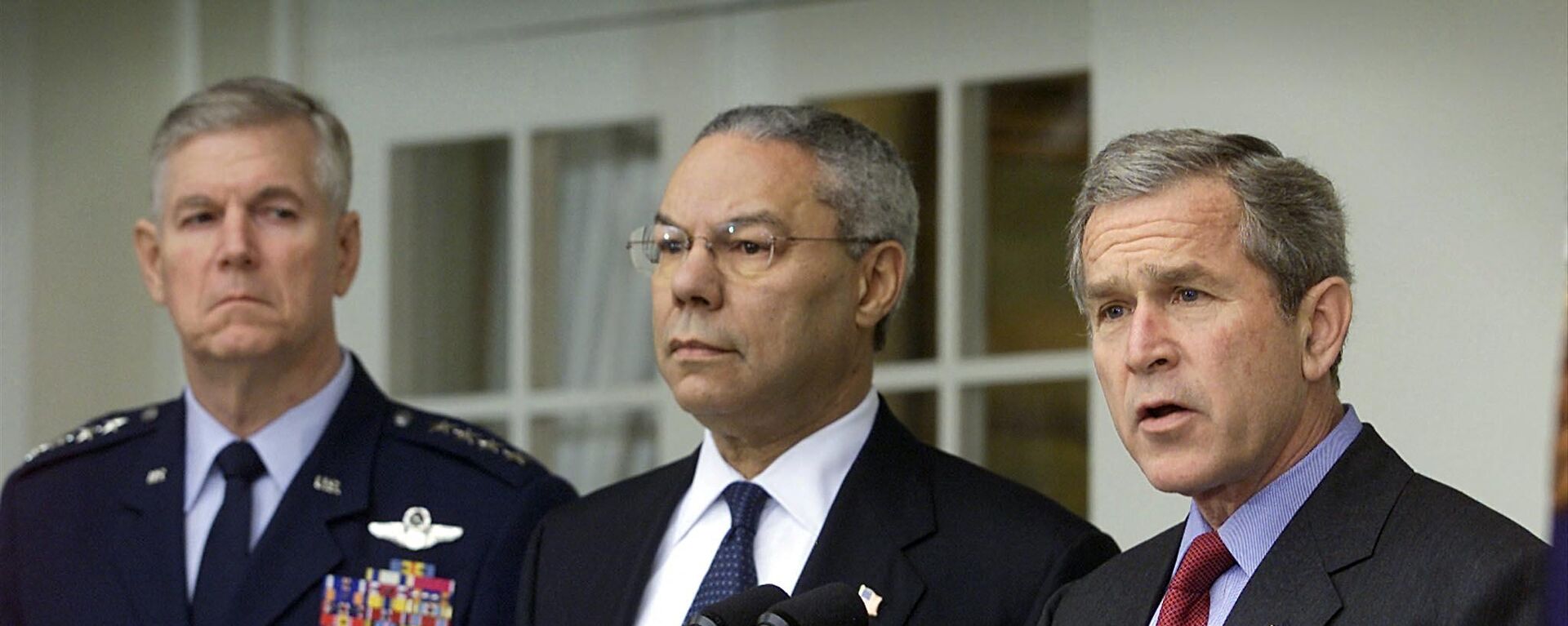
13 December 2022, 13:36 GMT
The 1972 Anti-Ballistic Missile Treaty (ABM) was an arms control treaty signed between the United States and the Soviet Union which limited Moscow and Washington’s ability to build ballistic missile interceptors, and was designed to slow the expansion of the superpowers’ arsenals of nuclear warheads and delivery systems, and to prevent either country from trying to gain an advantage over the other which would upset the global strategic balance.
However, on December 13, 2001, US President George W. Bush stated: "I have concluded the ABM Treaty hinders our government’s ways to protect our people from future terrorist or rogue state missile attack" and announced Washington unilateral withdrawal from the agreement. Six months later, on June 13, 2002, the agreement was torn up.
In response, on June 14, 2002, Russia announced its withdrawal from START II due to Bush's withdrawal from the ABM Treaty.
START III, or New START, came as a result of long consultations between the Russian and US governments. In June 2006, Russian President Vladimir Putin came up with an initiative to start a new negotiation process on nuclear arms reduction. Experts started developing the document after the meeting of Presidents Dmitry Medvedev and Barack Obama in London on April 1, 2009 on the sidelines of the G20 summit. The negotiations ended 11 months later with the long-anticipated document being inked by the heads of the two major nuclear powers.
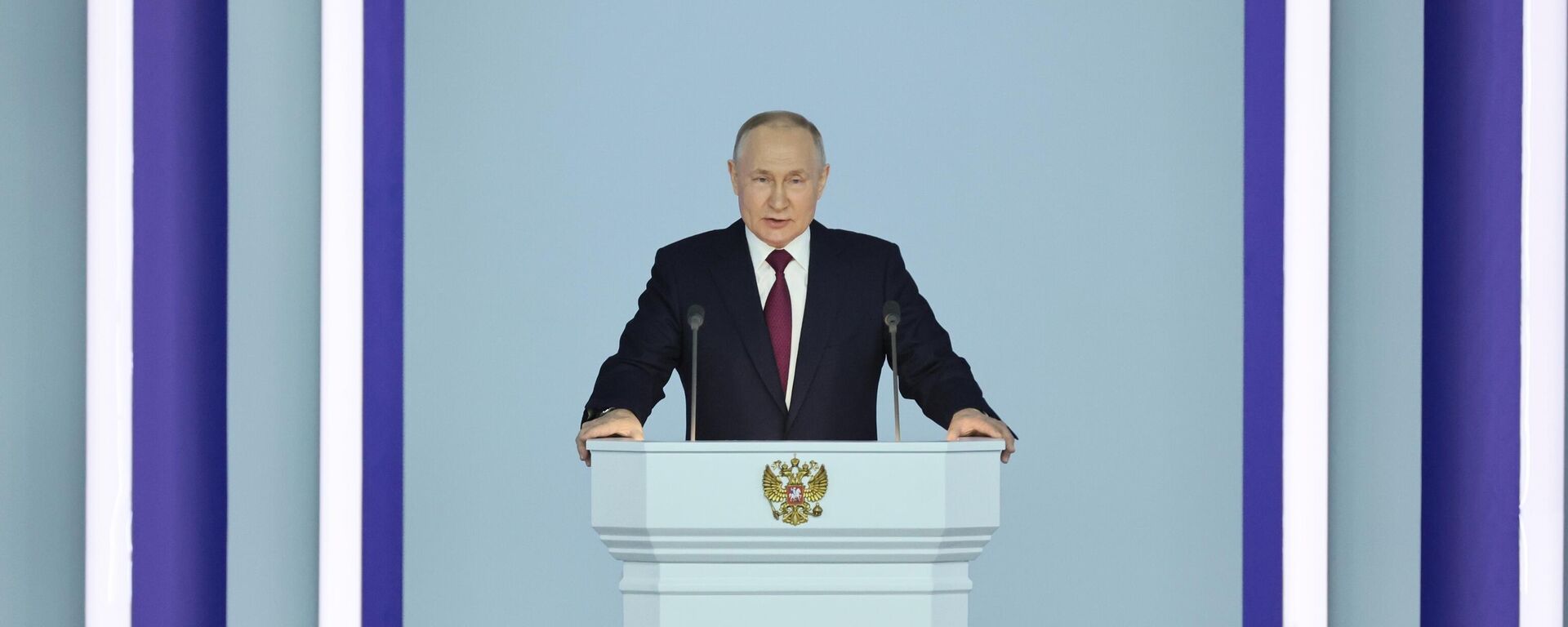
21 February 2023, 12:38 GMT
The sides agreed that they would reduce their strategic nuclear stockpiles to 1,550 warheads each. Warheads on deployed ICBMs and deployed SLBMs count toward this limit and each deployed heavy bomber equipped for nuclear armaments counts as one warhead toward this limit. This limit was 74% lower than the limit of the 1991 START Treaty and 30% lower than the deployed strategic warhead limit of START II. Likewise, the participants of the accords agreed to set a combined limit of 800 deployed and non-deployed ICBM launchers, SLBM launchers, and heavy bombers equipped for nuclear armaments. They also set a separate limit of 700 deployed ICBMs, deployed SLBMs, and deployed heavy bombers equipped for nuclear armaments.
The United States and the Russian Federation submitted the document for ratification in their respective parliaments in May 2010. The US Senate approved it on December 22, 2010; Russia's State Duma and the Federation Council did the same on January 25 and 26, 2011, respectively.
The parties established the Bilateral Consultative Commission (BCC) to implement the provisions of the treaty. The group's meetings were convened on an irregular basis at the request of either party.
In addition, New START gave both sides the right to conduct coordinated checks of the opposite side's strategic forces "on the ground," including ICBM bases, submarine bases and air bases. 18 annual inspections of two types were envisaged. Inspections of the "first type" were conducted at facilities hosting strategic offensive weapons bases of land-based ICBMs, ICBM-armed nuclear submarines, and strategic aviation air bases.
Inspections of the "second type" were carried out at places where missiles were loaded, repaired, and stored. Under the agreement's protocol, each party could conduct up to 10 inspections of the first type and eight of the second.
As of January 2021, the parties to the treaty had conducted 328 inspections and exchanged 21,403 notifications.
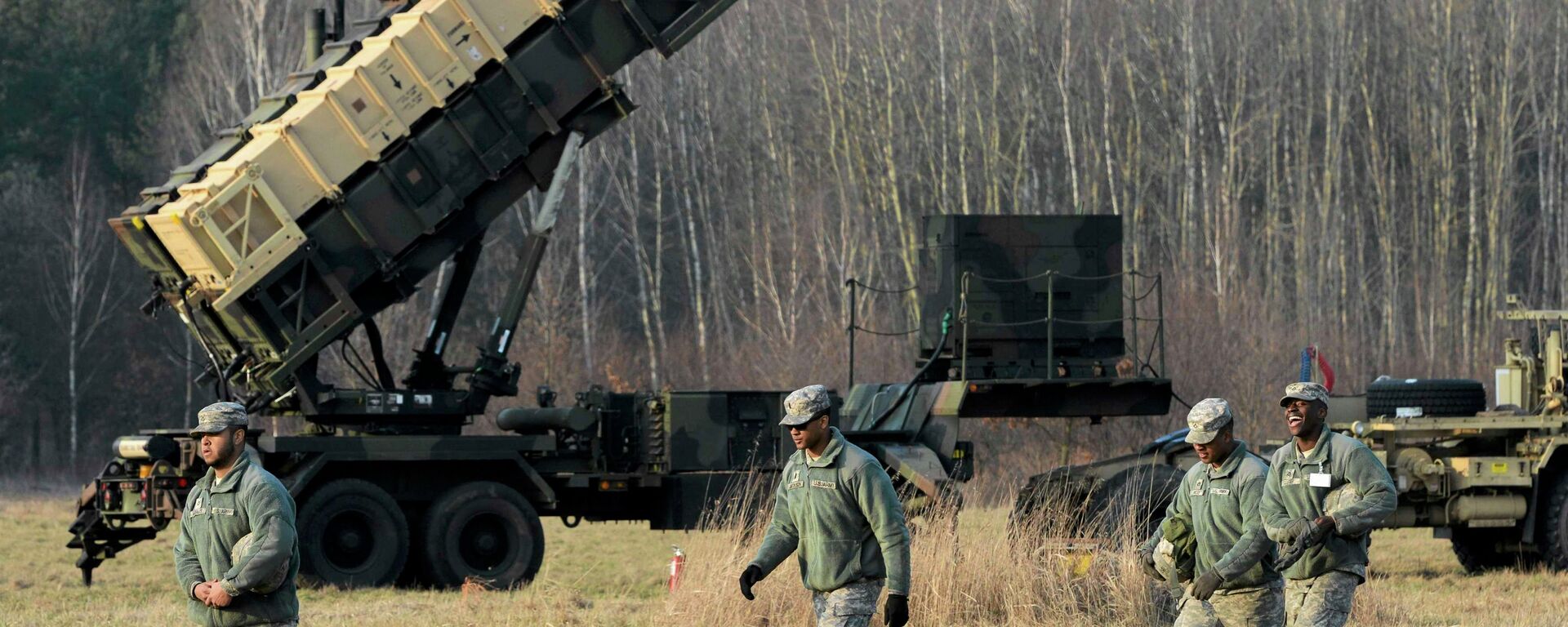
1 November 2021, 12:27 GMT
Whom Exactly Does US Missile Defense Shield Target in Europe?
Still, the parties made a number of reservations. The resolution of the US Congress mentioned that the new treaty does not impose restrictions on the deployment of missile defense systems, including in Europe. For its part, Russia reserved the right to withdraw from the treaty if the US missile defense reaches the stage of development when it becomes a threat to Russia's security. Separately, it was pointed out that the provisions of the preamble which link strategic offensive arms and missile defense have legal force and must be fully taken into account by the parties.
It appeared at the time that Washington understood Russia's concerns with regard to the deployment of NATO missile defense systems on the nation's doorstep in Europe. Russia's military specialists have repeatedly referred to launching capabilities of the US air defense weapons.
Similarly, Moscow asked its Western partners against whom they were deploying the ballistic missile defense site. In response, Washington cited "the potential Iranian nuclear threat," something which did not sound convincing to the Kremlin.
In September 2009, the Obama administration announced that it would replace plans made under former President George W. Bush to build a radar site in the Czech Republic and launchers for long-range missile interceptors in Poland with a plan to deploy existing missile defense systems to Europe and the Eastern Mediterranean over the next two years. Nonetheless, in February 2010, the Obama Cabinet announced that Romania, which joined NATO in 2004, would host the first deployment of SM-3 land-based interceptors in 2015 and Poland would host the next site in 2018.
The two sites, in Poland and Romania, were named as part of the European Phased Adaptive Approach (EPAA), where the US contributed, through NATO, to the development of the ballistic missile defense umbrella over Europe. Russia made it clear that the EPAA posed a threat to its missile forces and security. Even though various phases of
the US project have been delayed several times, it is still up and running.
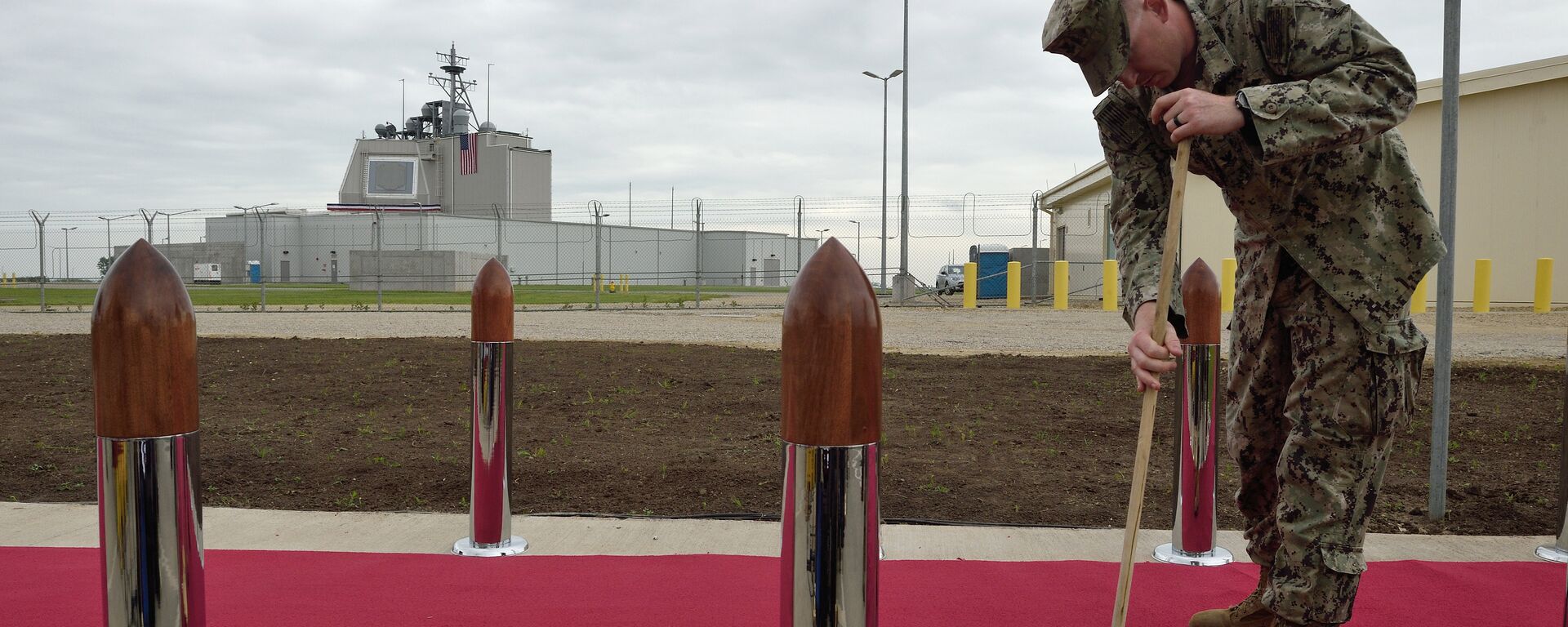
15 October 2022, 13:57 GMT
Trump Killed INF & Uncertainty Over New START
Another unpleasant surprise came during the presidency of Donald Trump, who dubbed New START a "bad deal" in 2017 and announced in 2018 that
the United States would withdraw from the 1987 Intermediate-Range Nuclear Forces (INF) Treaty.
The United States groundlessly accused Russia of violation of the INF Treaty by testing and deploying a "banned" missile system, referring to the ground-launched cruise missile 9M729. Eventually, the treaty was torn apart at Washington's initiative on August 2, 2019.
Russia and China lambasted the Trump administration for shattering global security. Since its inception, the INF Treaty led to the elimination of 2,692 US and Soviet nuclear and conventional ground-launched ballistic and cruise missiles with ranges between 500 and 5,500 kilometers, thus facilitating the attempt at the de-militarization of the major nuclear powers.
“Instead of engaging in a meaningful discussion on international security matters, the United States opted for simply undercutting many years of efforts to reduce the probability of a large-scale armed conflict, including the use of nuclear weapons,” Russian President Vladimir Putin stated on August 5, 2019.
New START was slated to expire on February 5, 2021. While the Russian leadership signaled its readiness to sign a new five-year extension, the Trump administration sought a new framework for the agreement and said that it would only renew the treaty if Russia made additional commitments. The US mainstream media noted at the time that the Trump administration believed that Russia was “desperate” to uphold New START and would make any concessions to keep it in place. However, Moscow did not allow Washington to twist its arm.
Eventually, the extension of New START was discussed by Vladimir Putin and Trump's successor, Joe Biden, during a phone talk on January 26, 2021.
"President Biden pledged to keep the American people safe from nuclear threats by restoring US leadership on arms control and nonproliferation. Today, the United States took the first step toward making good on that pledge when it extended the New START Treaty with the Russian Federation for five years," the White House's press release said on February 3, 2021. "Extending the New START Treaty ensures we have verifiable limits on Russian ICBMs, SLBMs, and heavy bombers until February 5, 2026."
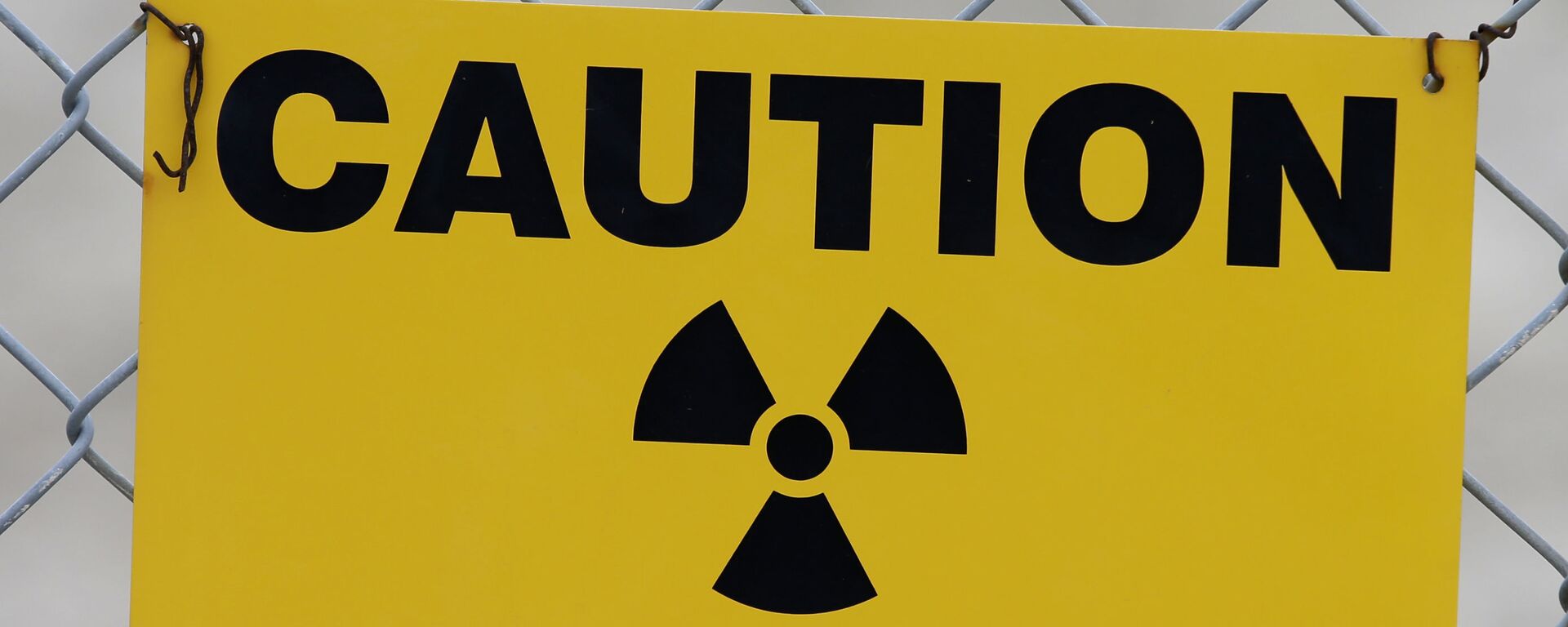
5 November 2022, 10:55 GMT
Biden's Weaponization of Kiev
However, over the course of 2021, the Biden administration stepped up support for the neo-Nazi regime in Kiev and increased the provision of weapons to Ukraine. During his address to the Federal Assembly, Putin underscored that Moscow was aware that the Kiev regime was planning a new wide-scale offensive against Donbass. The Ukrainian leadership even voiced the idea
of dropping the nation's non-nuclear status.
Furthermore, the US and NATO rejected crucial provisions of the Kremlin's December 2021 draft security agreements concerning guarantees of
the transatlantic military bloc's eastward non-expansion and Ukraine's neutral status. Russia had little if any alternative but to launch a special military operation to secure the country's sovereignty and protect Russian-speakers in the breakaway republics of Donetsk and Lugansk.
While the US and its NATO allies have openly declared their goal to weaken Russia and bleed it white, they also requested full access to the nation's nuclear sites. By demanding that Russia resume inspections of nuclear sites, NATO, in fact, declared its desire to become a party to the New START, Putin said. The Russian president noted that this provides the UK and France with a unique opportunity to open their nuclear stockpiles for inspection, too.
Indeed, given that NATO is targeting Russia as a unified bloc, it would be fair if all three nuclear member states of the bloc participated in a future agreement, if one were to be inked some day.
